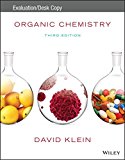
(a)
Interpretation:
The synthetic route for the preparation of given transformation should be determined.
Concept Introduction:
Hydrogenation reaction: The hydrogenation is a reduction reaction which results in an addition of hydrogen. Several organic compounds is hydrogenated, it becomes more saturated.
Linder’s catalyst: The
Soda amide: The
(b)
Interpretation:
The synthetic route for the preparation of given transformation should be determined.
Concept Introduction:
Soda amide: The NaNH2/NH3 is a strong base and excellent nucleophile. Its used deprotonated of weak acids and also for elimination reaction.
Anti- Markovnikov addition: These rules describe the regiochemistry where the substituent is bonded to a less substituted carbon, rather than the more substituted carbon. This placed is quite unusual as carbon cations which are commonly formed during alkene or alkyne reactions tend to favor the more substituted carbon.
(c)
Interpretation:
The synthetic route for the preparation of given transformation should be determined.
Concept Introduction:
Markovnikov addition: The addition reaction of parotic acids to a different alkene or alkyne, the hydrogen atom of
Soda amide: The NaNH2/NH3 is a strong base and excellent nucleophile. Its used deprotonated of weak acids and also for elimination reaction.
(d)
Interpretation:
The synthetic route for the preparation of given transformation should be determined.
Concept Introduction:
Soda amide: The NaNH2/NH3 is a strong base and excellent nucleophile. Its used deprotonated of weak acids and also for elimination reaction.
Metal and ammonia reaction: The alkyne involves sodium (Na)/NH3. This end up reducing to alkyne to give the trans (E) alkene.
Want to see the full answer?
Check out a sample textbook solution
Chapter 9 Solutions
Organic Chemistry 3rd.ed. Klein Evaluation/desk Copy
- The reaction Q(g) + R(g) → Z(l) is shown to be exothermic. Which of the following is true concerning the reactionarrow_forwardWhich of the following has the largest standard molar entropy, S° (298.15 K) He H2 NaCl KBr Hgarrow_forwardWhich of the following is true for a particular reaction if ∆G° is -40.0 kJ/mol at 290 K and –20.0 kJ/mol at 390 K?arrow_forward
- Choose the major product of the reaction with correct regio- and stereochemistry. Br2 H₂O O "Br Br & O 'Br OH Br 吡 O OH OH Br "OH Brarrow_forwardSelect the major product of the following reaction. & Br (CH)CONa (CH₂),COH 0 OC(CH) O &arrow_forwardDraw the products of the hydrolysis reaction between the ester molecule and water. Determine the products of the following reaction.arrow_forward
 ChemistryChemistryISBN:9781305957404Author:Steven S. Zumdahl, Susan A. Zumdahl, Donald J. DeCostePublisher:Cengage Learning
ChemistryChemistryISBN:9781305957404Author:Steven S. Zumdahl, Susan A. Zumdahl, Donald J. DeCostePublisher:Cengage Learning ChemistryChemistryISBN:9781259911156Author:Raymond Chang Dr., Jason Overby ProfessorPublisher:McGraw-Hill Education
ChemistryChemistryISBN:9781259911156Author:Raymond Chang Dr., Jason Overby ProfessorPublisher:McGraw-Hill Education Principles of Instrumental AnalysisChemistryISBN:9781305577213Author:Douglas A. Skoog, F. James Holler, Stanley R. CrouchPublisher:Cengage Learning
Principles of Instrumental AnalysisChemistryISBN:9781305577213Author:Douglas A. Skoog, F. James Holler, Stanley R. CrouchPublisher:Cengage Learning Organic ChemistryChemistryISBN:9780078021558Author:Janice Gorzynski Smith Dr.Publisher:McGraw-Hill Education
Organic ChemistryChemistryISBN:9780078021558Author:Janice Gorzynski Smith Dr.Publisher:McGraw-Hill Education Chemistry: Principles and ReactionsChemistryISBN:9781305079373Author:William L. Masterton, Cecile N. HurleyPublisher:Cengage Learning
Chemistry: Principles and ReactionsChemistryISBN:9781305079373Author:William L. Masterton, Cecile N. HurleyPublisher:Cengage Learning Elementary Principles of Chemical Processes, Bind...ChemistryISBN:9781118431221Author:Richard M. Felder, Ronald W. Rousseau, Lisa G. BullardPublisher:WILEY
Elementary Principles of Chemical Processes, Bind...ChemistryISBN:9781118431221Author:Richard M. Felder, Ronald W. Rousseau, Lisa G. BullardPublisher:WILEY





